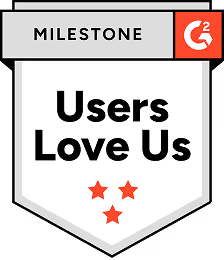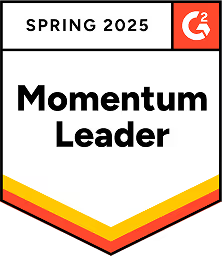Will Prospecting Emails Still Work in 2023?

Sales managers are always on the lookout for strategies and tactics that will positively impact their team’s bottom line. The question is: Where do prospecting emails rank on the list of high-ROI prospecting techniques?
Some sales reps tend to dismiss it as a low-value activity; others are skeptical that it works at all. On the other hand, many sales teams lean heavily on email prospecting, and see exceptional results from their efforts. Why the disconnect?
Will prospecting emails still work in 2023? What are some of the best practices associated with this prospecting channel? Let’s address these questions in more detail:
1. Do Prospecting Emails Still Work?
In a word: Yes. Email prospecting has traditionally been one of the most effective forms of prospecting for small businesses and enterprise-level organizations alike — and it remains so to this day.
For example, think about the COVID-19 pandemic that broke out in March 2020. In June of that year, companies sent out 36% more emails than average to their list of prospects. Did email open rates take a dip, or remain static relative to the increased volume? Amazingly (and somewhat surprisingly), open rates actually went up during that time, and hovered between 10-20% above pre-COVID levels from March to June!
What about the months since then? That same year, one study found that the average email open rate across all industries was almost 17%, with a 10.29% click-through rate. Again, these are superb numbers.
The bottom line? Email prospecting definitely works. But now you may be wondering: “If prospecting emails are so great, then why aren’t we seeing significant results when we send them out?” Let’s explore some possibilities.
Common Challenges of Email Prospecting
In years past, lumberjacks had to sharpen their axes before chopping wood. If they didn’t, then they’d waste a lot of time and energy with a dull edge.
Similarly, sales reps have to keep their prospecting emails “sharp” in order to overcome common challenges to their effectiveness. If they don’t, then they’ll likely waste a lot of time and energy without seeing great results.
Here are some of the most common obstacles around email prospecting today:
- Information overload. The fact is, the average prospect is bombarded by dozens of emails each day. They may even have trouble keeping up with all the new messages in their inbox! If a prospect doesn’t think that your email is relevant or valuable to them, odds are they’re not going to open it.
- Helpful vs. annoying. If a prospect needs a particular product or service that you offer, and you send them an email at that moment, then they’ll likely view your communication as helpful. But what if they don’t need your product at the moment? As a result of the information overload mentioned above, they may view yet another email in their inbox as an annoyance instead of a solution — and your brand image may even take a hit.
- The cost of undeliverable emails. The longer your prospecting list is, the more it will cost you to develop and implement an email campaign. Unfortunately, not all of your emails will reach their intended recipients. Many of them will go straight to the “Spam” folder; others will hit the wall of invalid addresses.
Clearly, you’ll have to do some work in order to navigate past these “roadblocks” to effective email prospecting. The good news is, you can learn the best practices around email prospecting, and greatly increase this tactic’s overall impact. Let’s discuss some tips that can help.
How to Make Your Prospecting Emails More Effective
1. Focus on your prospect’s needs, not your product’s features.
Too many companies fall into the trap of promoting their products without thinking deeply about the needs or preferences of their consumers. As a simple example, think of an auto dealership that advertises all the features of a new truck model (lane-assist technology, heated and ventilated front seats, a 12-speaker JBL audio system) without realizing their customers’ number #1 concern: How much weight can it haul? Clearly, the dealership’s advertising will be more effective if they focus on customer needs, instead of product features.
The same principle holds true for email prospecting. You want to put self-promotion on the back burner, and deliver content that will be relevant and credible to your recipients.
2. Develop exceptional subject lines.
When it comes to prospecting emails, your subject line is perhaps the most important piece of copy you’ll write. In fact, research indicates that 64% of recipients decide whether to open an email based on its subject line. Obviously, you want to get it right the first time — you probably won’t get a second chance!
Most subject lines run between 2-6 words. The main points to remember about your subject line:
- Make it engaging
- Keep it short
- Ensure it accurately reflects the content within
3. Personalize and segment your emails.
It can be difficult to personalize each and every email you send out in a day, but personalization is one of the most powerful ways to ensure that your prospecting emails are performing as they should.
Granted, investing in a personalized approach means “playing the long game.” You’ll have to perform some A/B tests to see which approaches resonate the most with your target audience. (For instance, are your B2B prospects more interested in addressing pain points with their current solution, or simply finding a better price for the same service?) You may also want to “humanize” your brand by sharing supplemental (yet relevant) information about yourself, or your company.
Of course, a big part of personalization is segmentation. You want to make sure that you’re sending the right emails to the right sub-groups on your prospecting list. When it comes to B2B prospecting, each person on your email list will likely have different concerns, different goals, and different levels of decision-making authority within their company. For example, a mid-level manager wouldn’t be able to implement sweeping changes across an enterprise-level organization like the company’s CEO would.
The point is: Whatever B2B marketing software or system you use, do all that you can to personalize and segment your emails. Then your messaging will be relevant and engaging for all of your prospects, no matter who they are or where they work.
4. Match your emails to your prospect’s behavior.
Over time, you should start to see patterns emerge from your email prospecting. For example, you may notice that specific words trigger a positive response among your subscribers. Some recipients may only open emails if they’re from a known sender; other prospects will only open your emails on the weekend. The list of possible patterns you may uncover is virtually endless.
Once you do uncover those patterns, however, you need to act on what you learn. Use that information to create effective email sequences that will motivate your recipients to take action. For instance, if your B2B subscribers visit a specific thought leadership piece on your blog, trigger an email sequence that will direct them to other articles on similar topics. Another example: If a B2B prospect demonstrates interest in a service you offer, send out an email with a free trial offer for that particular service.
Is such customization time-consuming? It can be. However, it is also a great way to improve your engagement rate, and ultimately boost your bottom line.
Leverage Prospecting Emails to Grow Your Business in 2023 and Beyond
In summary, prospecting emails absolutely work as a viable prospecting tactic — provided, of course, that you implement best practices when developing and sending out your messages. When you focus on content that speaks to the needs of your prospects, personalize your emails to the extent possible, and pay attention to behavioral trends among your recipients, then you’ll be able to squeeze the highest possible ROI out of your email prospecting strategy.
Of course, all of this is easier said than done. If you don’t have the bandwidth to make needed changes on your own, then it may be good to reach out for some expert assistance. If you’d like to learn more about the best practices of email prospecting, be sure to check out our resources for taking your prospecting game to the next level — like our insights into the “3 P’s of outbound prospecting.”
Or feel free to contact the Regie team today. We’d be happy to answer any questions you have.
FAQs
Read more posts
View all BlogsNeed more help?
If you still have questions, make sure to check out our Help Center: there, you'll find all the tips & advice you'll need to get your team up & running with Regie.ai.









